Does your lawn want to be a meadow?
| Published: 09-20-2019 11:00 AM |
When Cat Thomson and Steve McDonough moved onto their ¾-acre lot in Leeds, the landscaping consisted of dirt, dirt, and more dirt.
“It was a blank slate,” said Thomson, a freelance writer and editor. They built their house on developed land that was once woods, a fact that Thomson, an environmentalist and animal lover, sought to help balance with their landscape. “We wanted to create some new habitats for wildlife and give back a little of what we took.”
This meant not going all lawn, a growing trend among eco-conscious homeowners. Lawns, though tidy and uniform (and sometimes required by neighborhoods), are increasingly known for their negative effect on the environment.
“Sadly, lawn is the default of the American landscape,” said Todd Lynch, a Williamsburg-based landscape designer and owner of Ecotropy, an eco-minded landscape design studio. According to a 2005 NASA estimate, the United States is home to more than 40 million acres of lawn — that’s more lawn than there is irrigated corn. In Massachusetts, more than 20 percent of the land is covered in grass.
Experts say this is a problem for several reasons. For one, Lynch points out that lawns are a “monoculture” — a place that doesn’t provide food and shelter for insects, especially for bees and other pollinators needed for planetary health.
“Any habitat value is destroyed whenever it’s mowed, taking away all the flowers,” Lynch said. Also, lawns with compacted soil make it “hard for rainwater infiltration to happen,” he said, “which can create runoff problems.”
Add to that the fossil fuels that are used in most mowers, plus the fertilizers that harm water life, and the toxic herbicides and pesticides that studies have shown homeowners use with less training and greater abandon than farmers — and you have what some call an “ecological disaster.”
So what’s an earth-loving homeowner to do? For starters, an existing lawn can be “eco-tweaked,” or cared for without herbicides and pesticides, mowed and watered less often, and planted with a mix of grasses that includes clovers (a favorite of bees).
Article continues after...
Yesterday's Most Read Articles
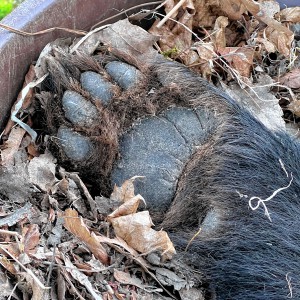 Holyoke man finds bear paw in his yard
Holyoke man finds bear paw in his yard
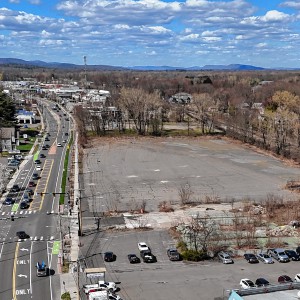 Petition to block auto dealership on King Street falters in Northampton
Petition to block auto dealership on King Street falters in Northampton
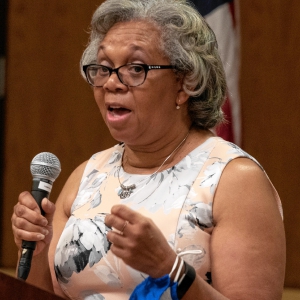 First look at how little Amherst’s police alternative being used called troubling
First look at how little Amherst’s police alternative being used called troubling
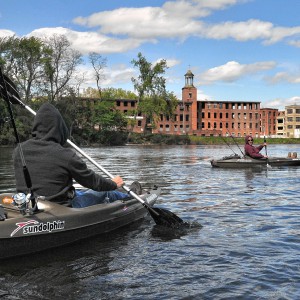 Developer lands $400K loan for affordable housing project in Easthampton mill district
Developer lands $400K loan for affordable housing project in Easthampton mill district
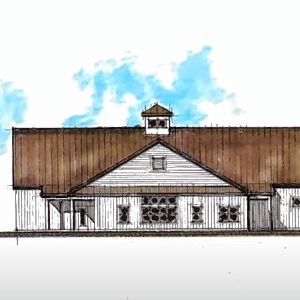 Developer pitches new commercial building on Route 9 in Hadley
Developer pitches new commercial building on Route 9 in Hadley
 Boyfriend accused in slaying of Hampden sheriff’s assistant, former legislator’s top aide
Boyfriend accused in slaying of Hampden sheriff’s assistant, former legislator’s top aide
“Lawn does have its place,” said Lynch. “It can be really beautiful. It’s a great area for kids to play in.” But, he said, “if it’s just there because it’s there, I would encourage people to think about other ways to use their space.”
A popular non-lawn option is a native wildflower meadow — which is what Thomson and McDonough chose for their property as an effort to re-wild their landscape. Though they went with a traditional, organic lawn in back for their kids’ sports, the front lawn is largely devoted to wildflowers. McDonough, a solar project manager, started the meadow with seeds and though at first it largely came up as grass, each year more flowers chime in.
As the flowers grow, McDonough adds seeds and removes weeds like allergen-triggering ragweed, invasive knotweed, and foxtail, which tends to take over, while allowing other weeds, like Queen Anne’s lace and goldenrod, to thrive. Now there’s a rowdy mix of those weeds, plus Echinacea, black-eyed Susans, blue asters, and more.
As far as maintenance, “In the spring you watch it grow,” McDonough said. The summer brings some weed removal, plus occasional night watering when the weather gets extra-dry. Fall is when he’s busiest in the meadow — laying down landscape material to tamp out grass, adding seeds, and hand weeding.
“Sometimes I look at it as a chore, but other times I get really into it and get meditative about it,” McDonough said. “Especially when you’re out here and it’s sunny and warm and there’s butterflies and bees everywhere. It’s amazing how much life there is in there.”
Thomson is equally awed. She said she often watches from the front porch in all seasons, seeing baby crickets and grasshoppers grow to adulthood. She also observes praying mantises, katydids, and plenty of bees. Finches snack on seeds from the flowers. Frogs and toads leap among the shady grasses. Rabbits hop through. And because the woods are nearby, wild turkeys have visited and so has a young fox learning to hunt. “We see so many things,” she said, “and the sounds are just incredible.”
Of course, not everyone sees an unmowed lot as beautiful.
“There’s still a large part of the population that thinks you’re supposed to have lawn, because that’s just what you do,” said Owen Wormser, the owner of Abound Design, a Leverett-based company focused on sustainable landscaping. “They associate letting your lawn grow with dereliction or problems. So education becomes a really important part of this.”
That’s why when Mount Holyoke College recently turned over a formerly mowed area into a wildflower meadow, they posted signs reading, “this area has been designated a no-mow zone to improve pollinator habitat and increase the diversity of pollinator species visiting our campus.”
Some organizations are reaching out beyond signs, with educational programs that integrate the lawn-to-meadow movement. Last summer, the Eric Carle Museum for Picture Book Art in Amherst opened Bobbie’s Meadow, a multi-use outdoor space dedicated to Carle’s late wife and museum co-founder, Barbara “Bobbie” Carle. The area surrounding the museum’s 100-year-old apple orchard was once lawn, but is now a wildflower meadow. Wormser, who is writing a book, “Turning Lawns into Meadows,” due out in 2020, created the 21-seed native wildflower mix for the project.
We’re connecting art, nature, and people in a new setting to inspire creativity and expand our programming,” said Alexandra Kennedy, executive director of the Eric Carle Museum, in a press release. “We are also creating an important new wildlife habitat and giving guests of all abilities access to it.”
Northampton is also getting in on the action, with a low-cost plan for the steep lawn between City Hall and Crafts Avenue to be changed into a meadow. “It’s a classic example of a useless lawn,” said Wormser, who is also the co-founder of a sustainable landscaping non-profit, Local Harmony. “No one ever uses it, no one ever sits on it. It takes a lot of energy and time to mow it and it doesn’t really provide anything for anybody or anything. It’s a real no brainer to create a demonstration for how this is possible.”
A new state proposal and supports creating more pollinator habitat. A new report from the Massachusetts Department of Energy Resources proposes that the Mass SMART Solar Program create an incentive for developers to add native wildflowers to their solar array fields. It would award $3,500 per megawatt, per year, for those who seed with pollinators instead of grass. It would apply to new and existing projects that earn pollinator certification from the University of Massachusetts Amherst Clean Energy Extension. Other states have created similar incentives.
Though there’s no state incentives in the works for individuals to have their lawns turned into meadows, the project has many rewards.
“A lot of people feel unempowered or like they can’t do a lot in the world,” said Wormser. “We have the ability to transform the Pioneer Valley into a place that provides a lot of habitat for insects and other animals.”

 Valley Bounty: Grass-fed animals that feed the grass: Gwydyr Farm in Southampton focuses on ‘restoring the connection between land, food and people’
Valley Bounty: Grass-fed animals that feed the grass: Gwydyr Farm in Southampton focuses on ‘restoring the connection between land, food and people’ Weekly Food Photo Contest: This week’s winner: Mary Chicoine of Easthampton
Weekly Food Photo Contest: This week’s winner: Mary Chicoine of Easthampton  Speaking of Nature: A romantic evening for two birders — To hear the wonderful sounds of the Saw-whet Owl one must go outside at night
Speaking of Nature: A romantic evening for two birders — To hear the wonderful sounds of the Saw-whet Owl one must go outside at night Speaking of Nature: Where have all the birds gone?: They’re there, and here’s a handy tool to keep track of their appearances
Speaking of Nature: Where have all the birds gone?: They’re there, and here’s a handy tool to keep track of their appearances
